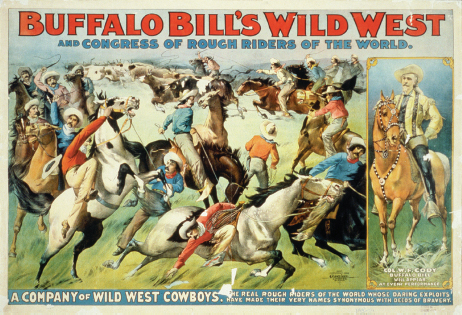Age of the Press Agent: P. T. Barnum and Buffalo Bill
Printed Page 359
The earliest press agents excelled at publicity—a type of PR communication that uses various media messages to spread information and interest (or “buzz”) about a person, a corporation, an issue, or a policy. The most effective publicity efforts not only excited people’s imagination but also helped establish enduring national values.
In the 1800s, some publicity tactics could also border on outrageous. Consider press agent Phineas Taylor (P. T.) Barnum, who used gross exaggeration, fraudulent stories, and staged events to secure newspaper coverage for his clients, for his American Museum, and (later) for his circus, which he dubbed “The Greatest Show on Earth.”

William F. Cody was another notorious publicity hound. From 1883 to 1916, Cody, who once killed buffalo for the railroads, used press agents to promote himself and his traveling show: “Buffalo Bill’s Wild West and Congress of Rough Riders of the World.” The show employed sharpshooter Annie Oakley and Lakota holy man Sitting Bull, whose legends were partially shaped by Cody’s press agents. These agents were led by John Burke, one of the first to use an array of media channels to generate publicity. Burke promoted Cody’s show through a heady mix of newspaper stories, magazine articles and ads, dime novels, theater marquees, poster art, and early films. Burke and Buffalo Bill fired up Americans’ love of rugged individualism and frontier expansion—a national mythology that later showed up in books, radio programs, and Hollywood films about the American West.